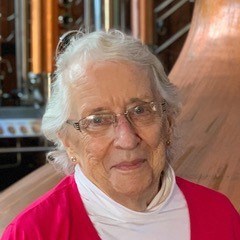Before the pulp mills were built in the mid-1960s, Prince George was known for its abundant boreal forests and dozens of sawmills that turned those trees into building products.
It was a lumber town with a population of less than 6,000 that relied on the adventurous spirit of the loggers it attracted to work in the bush to create the capital of northern B.C.
Those characters and the lives they led while shaping the early history of her hometown have inspired author Bev Christensen to write her first novel, Too Soon Old - Too Late Smart, published by Friesen Press.
“I started it many years ago and probably was working at the Citizen and I had been reading a lot of books written by Maritime authors in which they talked about the colourful hardworking guys who were fishermen and the dangerous work they did,” said Christensen.
“I lived in Prince George since 1939, so I knew the history that most people there don’t remember or never knew and it was every bit as colourful. The city was surrounded by small haywire sawmills, hundreds of them, and people often lost fingers and feet to those mills. On the weekend, they’d all flood into Prince George and the town would be overrun with drinking loggers, so I just wanted to capture that.”
The plot centres around Else, a young mother who decides to flee her alcoholic and abusive husband in Vancouver and return to the farm her late parents from Norway built in the northern B.C. wilderness. Eventually she finds love in her life again, just as her ex-husband returns to torment her again.
Christensen used to live on Cranbrook Hill with her husband Svend in a house without electricity or running water, living in relative isolation through severe winters while dealing with bears and other wildlife and she used her memories of her own home to describe the family farm Else and her son came back to after living in the big city.
At one point in the book a forest fire threatens the area and it’s all hands on deck. The mills shut down and everybody joins the effort to fight the fire with the support of the townspeople who bring them food and temporary shelter. That was how fires were actually fought back in the day, and men would be pulled out of bars to join firefighting crews.
Born in Smithers, Christensen was eight when she moved to Prince George with her family. Her father Cliff Warner became part-owner of the Citizen in the 1940s, her uncle started the Interior News in Smithers and both her brothers were trained to be printers. She joined the Citizen news team in 1969 as the women’s page editor and covered news in the city for 24 years until she retired in 1993.
The characters in her book are based on real people and Christensen twisted details of their lives enough to avoid revealing their identities.
“It’s people that I knew and incidents I heard of and some that are the creation of my overactive imagination,” she said.
“I’m just trying to capture some of the spirit that was there when there were all those sawmills and all these colourful people who really supported each other in important ways. The early part of the book is based on some pioneer people that I knew and those people who moved in there during the depression and managed to make a life. We forget that, and their stories are quite amazing.”
She’s ghost-written numerous autobiographies of city pioneers, utilizing her collection of old photographs to document their lives for the UNBC archives.
Christensen, a former School District 57 trustee who once served as a BC Rail director and was president of the Prince George Minor Hockey Association, also writes non-fiction and has released three books, two of which delve into Prince George and northern B.C. history.
Too Good To Be True: Alcan’s Kemano Completion Project was shortlisted for the Huber Evans non-fiction B.C. book prize in 1996. She also featured local businesses in Prince George Rivers, Railways and Timber.
Christensen’s biography Grab The Devil’s Tail: Confessions of a Convict Turned Police Informant, focuses on the fascinating life of career criminal Patrick Michael Mooney.
Now 91, Christensen lives in Victoria where she shares a condominium with her youngest daughter Suzanne Christensen, the assistant deputy minister of the Ministry of Social Development and Poverty Reduction.
“I still miss Prince George; it’s the people,” Bev said. “I think people in Victoria are a bit uptight and I’ve got to the point where I take delight in saying something I know will shock them. People better not say anything bad about Prince George or they’ll hear from me.”



